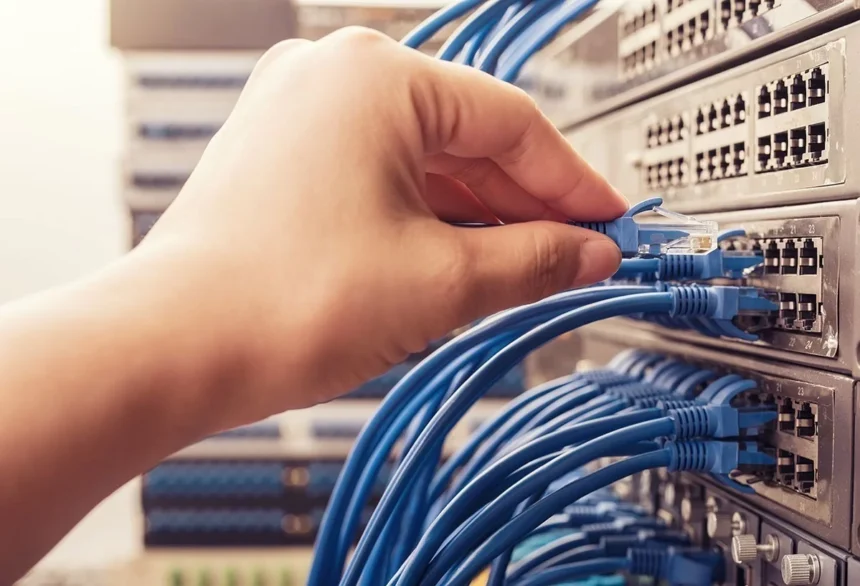Planning a structured cabling installation for your business? We understand you. It is the backbone of the robust network infrastructure. Having a robust network infrastructure ensures effective and efficient performance.
Even a slight mistake can hamper the network’s performance and reliability. One thing is wrong and it can take hours for you to troubleshoot issues that could have been easily avoided with prior planning.
No clue what mistakes happen during the structured cabling installation? Look no more. Hear straight from the structured cabling installers and avoid making them get the desired performance.
Structured Cabling Installation Mistakes To Avoid
Ensuring the structured cabling installation is done the right way is crucial to getting the maximum performance. Let’s have a sneak peek into the common mistakes to avoid.
No proper cable labeling
Missing out the proper cable labeling and organization is one of the most common mistakes happening during the structured cabling installation. Picture this you have to troubleshoot the issue but all the cables are tangled with no labeling on them.
It will only waste your time and make it hard for you to identify the issue and resolve it. Also, you’ll be left confused which can lead to downtime and disruptions.
The way forward? Label and organize the cables so that it’s easy to access and manage. Moreover, keeping your network organized can also increase its lifespan and pay good returns on the investment you make.
Running caves parallel to electrical cables
Running the network cables parallel to electrical cables is another common mistake most people make during structured cabling installation. It seems like a convenient option but can become the leading cause of electromagnetic interference (EMI).
It not only causes interference but also degrades signal quality and causes network performance issues. Ignoring this interference can result in slow network speeds, and errors in data transmission and can cause communication breakdowns.
To fix this, consider running the network cables perpendicular to electrical cables. Doing so will minimize exposure to electromagnetic fields. Also, choose cables with superior shielding to safeguard against interference. This will ensure you a clear signal and reliable network performance.
Loose connections and damaged cables
Did you check if the cable is all right? This is because physically damaged cables also cause trouble in structured cabling installation and might not give the best performance. Often, the cables get damaged due to environmental factors or human activity. It will only degrade performance.
Likewise, loose connections resulting from hasty installations can lead to network failures and data loss.
You can fix this by conducting regular inspections and securing cables away from hazards. This is crucial for ensuring the network’s integrity.
Using the wrong cable length
Using the wrong cable during the structured cabling installation is also a significant mistake that can cost you in the long run. Each network cable has a maximum length and using it beyond deteriorates the signal quality.
The key is to adhere to the cable length limits. Otherwise, it can lead to data transmission losses. To maintain the signal integrity, it is essential to adhere to these cable standards.
Using separate cables for data and voice
The next blunder many commit during the installation is using separate cables for data and voice. It is outdated and inefficient. Also, data cables are more expensive. Using separate cables can increase the installation costs and lead to unnecessary clutter, making it difficult for you to make upgrades and troubleshoot issues.
The solution? Make use of a single twisted pair networking cable for data and voice cabling installation. Modern cables handle both efficiently, reduce costs, and make the network infrastructure straightforward to manage and upgrade.
Limited space for upgrades
Another critical mistake that can have long-term implications is having limited space for cable removal and future upgrades. This happens because you focus solely on the current needs and overlook the future.
Limited space makes it difficult for you to add new cables and replace the old ones. Ignoring this can lead to network downtime and increased labor costs.
The best is to plan the installation prior with the future changes in mind. Ensure to have sufficient space around cables to access easily. Organize cables neatly and avoid overcrowded conduits.
Not paying heed to cable testing
Testing the cabling post the installation is one of the most critical yet neglected steps during the installation. You may not realize it initially but this can turn out to be a costly affair for you in the long run.
When you skip testing the cables, the chances are some faults can cause intermittent network issues and this can lead to poor performance and frequent outages.
As a result, it is best to test your cables during the installation to ensure they meet the desired standards and are performing the way they were supposed to be. While testing the cables, check the cable’s length, signal strength, and continuity to get the maximum performance.
Wrapping Up
These are the common mistakes that can put all your efforts in vain. The next steps? Find the structured cabling installation services to get the installation done.


